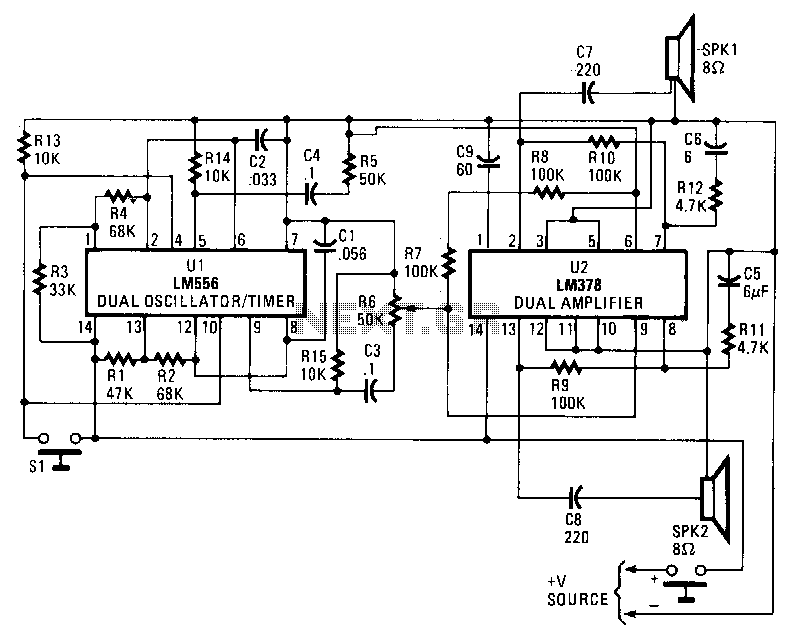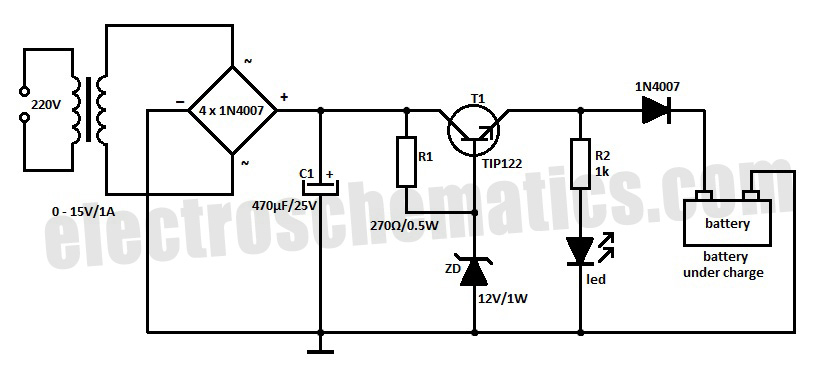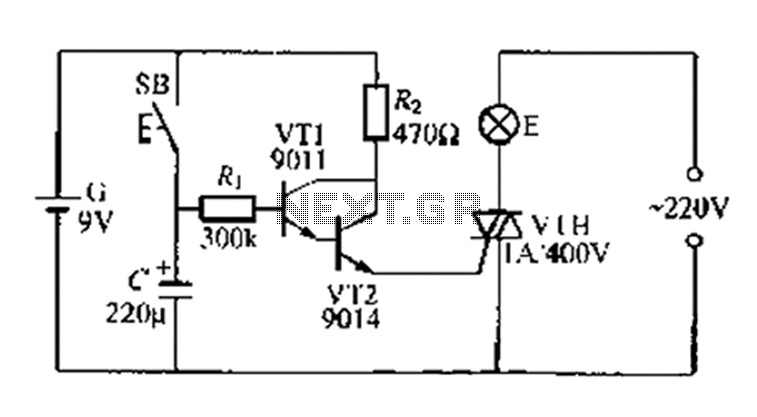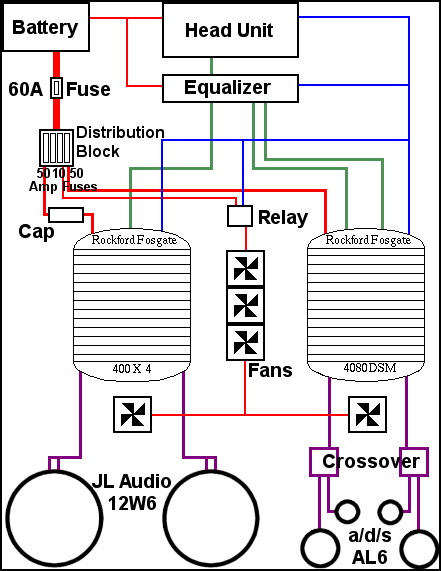
car battery 6v or 12v charger
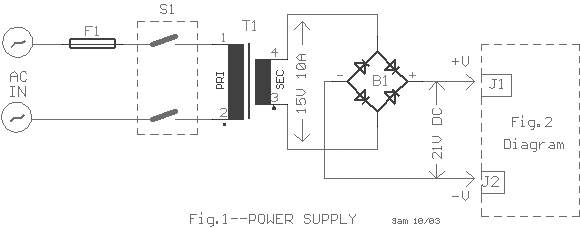
This circuit can automatically and efficiently charge 6V and 12V batteries. A key factor in the successful operation of the circuit is the use of a high-quality transformer [T1] that has excellent insulation and resistance to short circuits.
The circuit functions as a battery charger, designed to handle both 6V and 12V lead-acid batteries. The primary component, the transformer (T1), steps down the AC voltage from the mains supply to a suitable level for charging the batteries. The choice of a high-quality transformer is critical, as it ensures proper voltage regulation and minimizes the risk of overheating or failure due to short circuits.
The circuit typically includes a rectifier, which converts the AC voltage output from the transformer into DC voltage. This is essential since batteries require direct current for charging. The rectifier may consist of a bridge rectifier configuration using diodes rated for the expected current load.
Following the rectification stage, a filtering capacitor is employed to smooth out the pulsating DC voltage, providing a more stable voltage output to the batteries. The capacitor's value must be selected based on the charging current and the desired ripple voltage.
Additionally, a voltage regulator may be incorporated to maintain a constant output voltage, ensuring that the batteries are charged safely and efficiently without overcharging. A current limiting resistor or a more sophisticated current control circuit can also be included to prevent excessive current flow, which could damage the batteries.
To enhance safety and reliability, the circuit may feature protection mechanisms such as fuses or circuit breakers to guard against short circuits and overcurrent conditions. Proper heat dissipation measures, like heat sinks for the diodes and voltage regulators, should also be considered to maintain optimal operating temperatures.
Overall, the successful operation of this battery charging circuit relies on the careful selection of components, particularly the transformer, as well as the implementation of protective features to ensure safe and efficient charging of 6V and 12V batteries.This circuit can charge automatically, fast and rightly, batteries 6V and 12V. A basic factor in the success in the circuit operation is the use of transformer [T1] of good quality with very good insulation and resistance in the short circuits.. 🔗 External reference
The circuit functions as a battery charger, designed to handle both 6V and 12V lead-acid batteries. The primary component, the transformer (T1), steps down the AC voltage from the mains supply to a suitable level for charging the batteries. The choice of a high-quality transformer is critical, as it ensures proper voltage regulation and minimizes the risk of overheating or failure due to short circuits.
The circuit typically includes a rectifier, which converts the AC voltage output from the transformer into DC voltage. This is essential since batteries require direct current for charging. The rectifier may consist of a bridge rectifier configuration using diodes rated for the expected current load.
Following the rectification stage, a filtering capacitor is employed to smooth out the pulsating DC voltage, providing a more stable voltage output to the batteries. The capacitor's value must be selected based on the charging current and the desired ripple voltage.
Additionally, a voltage regulator may be incorporated to maintain a constant output voltage, ensuring that the batteries are charged safely and efficiently without overcharging. A current limiting resistor or a more sophisticated current control circuit can also be included to prevent excessive current flow, which could damage the batteries.
To enhance safety and reliability, the circuit may feature protection mechanisms such as fuses or circuit breakers to guard against short circuits and overcurrent conditions. Proper heat dissipation measures, like heat sinks for the diodes and voltage regulators, should also be considered to maintain optimal operating temperatures.
Overall, the successful operation of this battery charging circuit relies on the careful selection of components, particularly the transformer, as well as the implementation of protective features to ensure safe and efficient charging of 6V and 12V batteries.This circuit can charge automatically, fast and rightly, batteries 6V and 12V. A basic factor in the success in the circuit operation is the use of transformer [T1] of good quality with very good insulation and resistance in the short circuits.. 🔗 External reference
